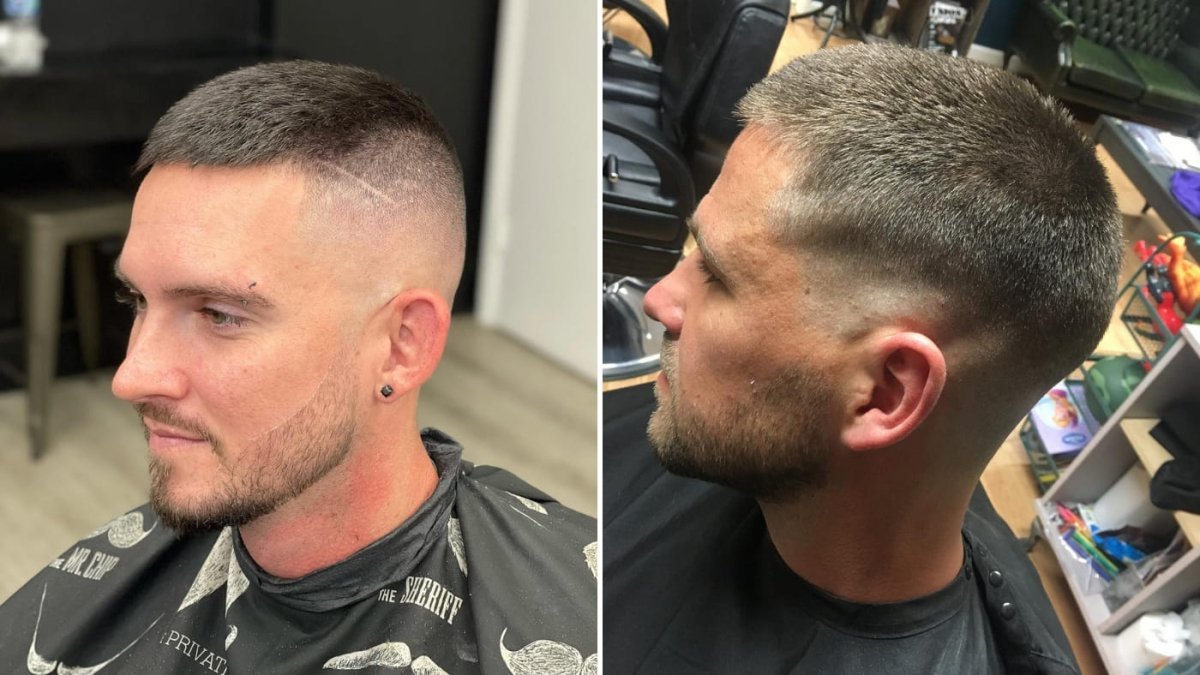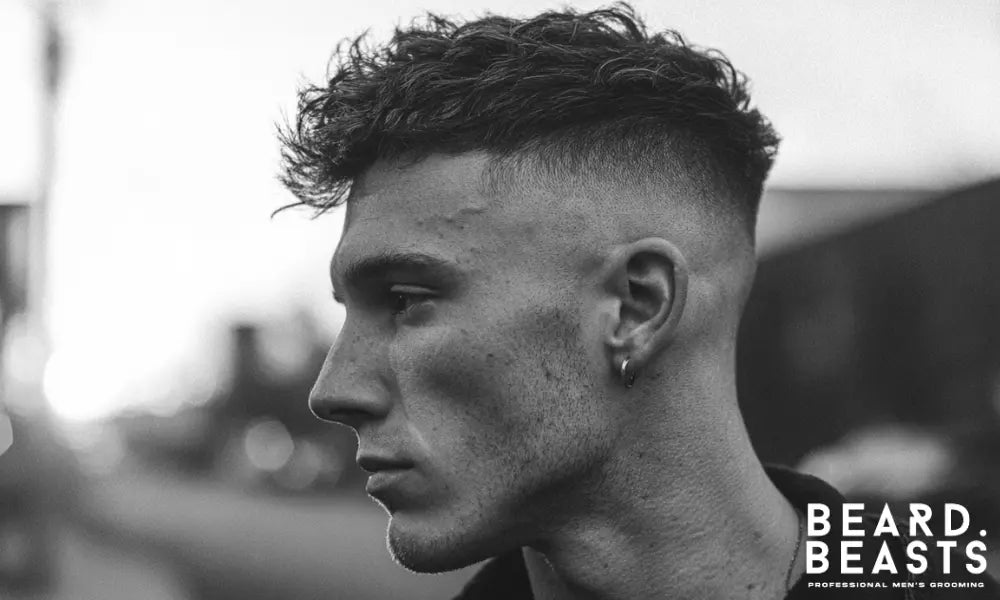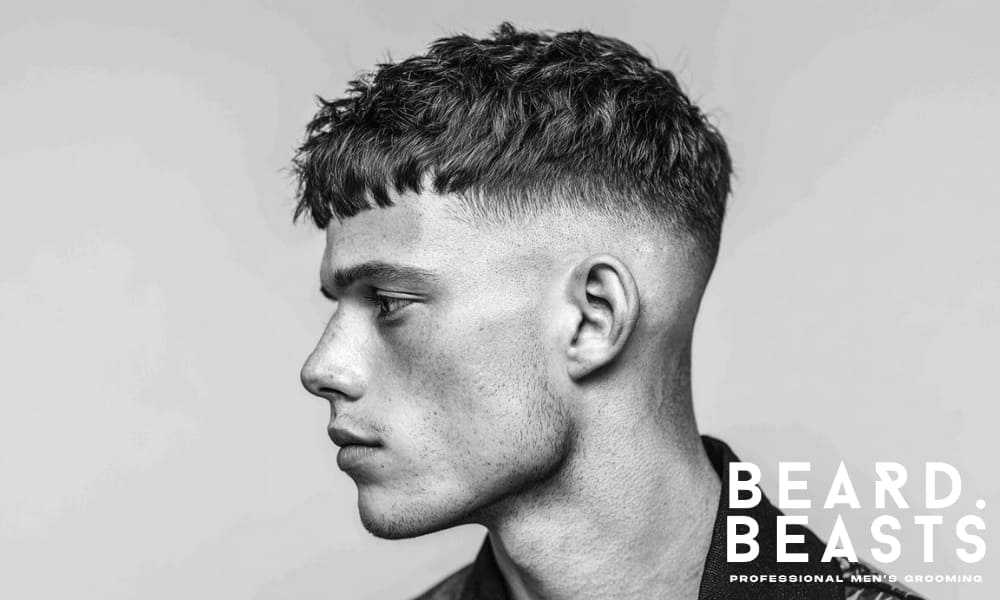The high and tight vs crew cut: These two classic, short hairstyles share a timeless appeal, offering a clean, masculine look that’s been popular for decades. Favored by men who appreciate a polished appearance with minimal fuss, both cuts provide reliable options for a sharp, structured style.
Whether you’re drawn to the crisp lines of a high and tight or the versatile nature of a crew cut, choosing the right one depends on your individual needs.
In this guide, we’ll break down the key features of each cut, exploring their strengths and helping you decide which hairstyle best complements your lifestyle, face shape, and personal preferences.
What is a High and Tight?
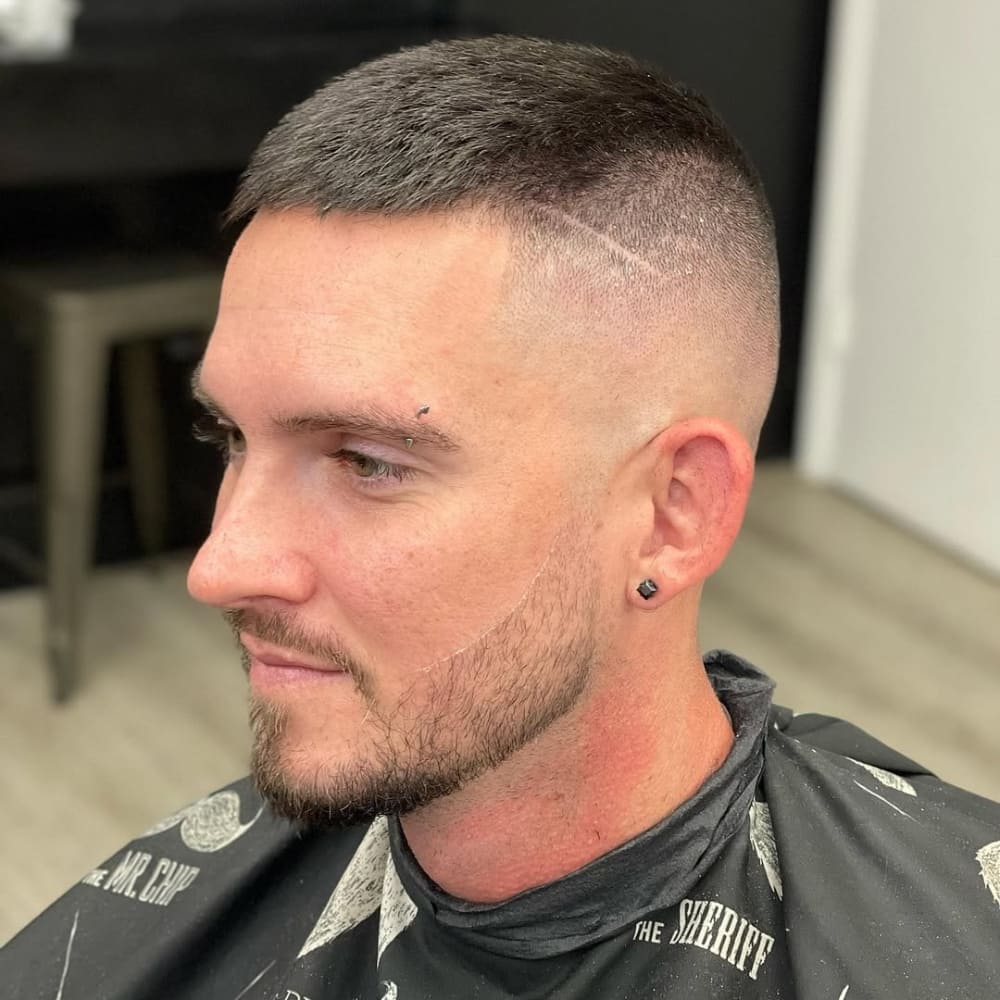
@cut_by_aj
The high and tight is a sharp, military-inspired haircut characterized by its ultra-short sides and back, coupled with a slightly longer strip of hair on top. This clean, structured look requires minimal upkeep, making it a popular choice for men who prefer a low-maintenance grooming routine.
The defining feature of the high and tight is the dramatic, high fade – often shaved close to the skin – which creates a striking contrast with the short top. This sharp contrast emphasizes facial features, particularly jawlines and cheekbones, giving the cut a rugged, masculine edge.
While similar to the crew cut, the high and tight boasts a more dramatic fade, resulting in a bolder, more defined appearance. It’s an excellent option for men with strong facial features and coarse or straight hair who appreciate a disciplined, no-fuss aesthetic.
What is a Crew Cut?
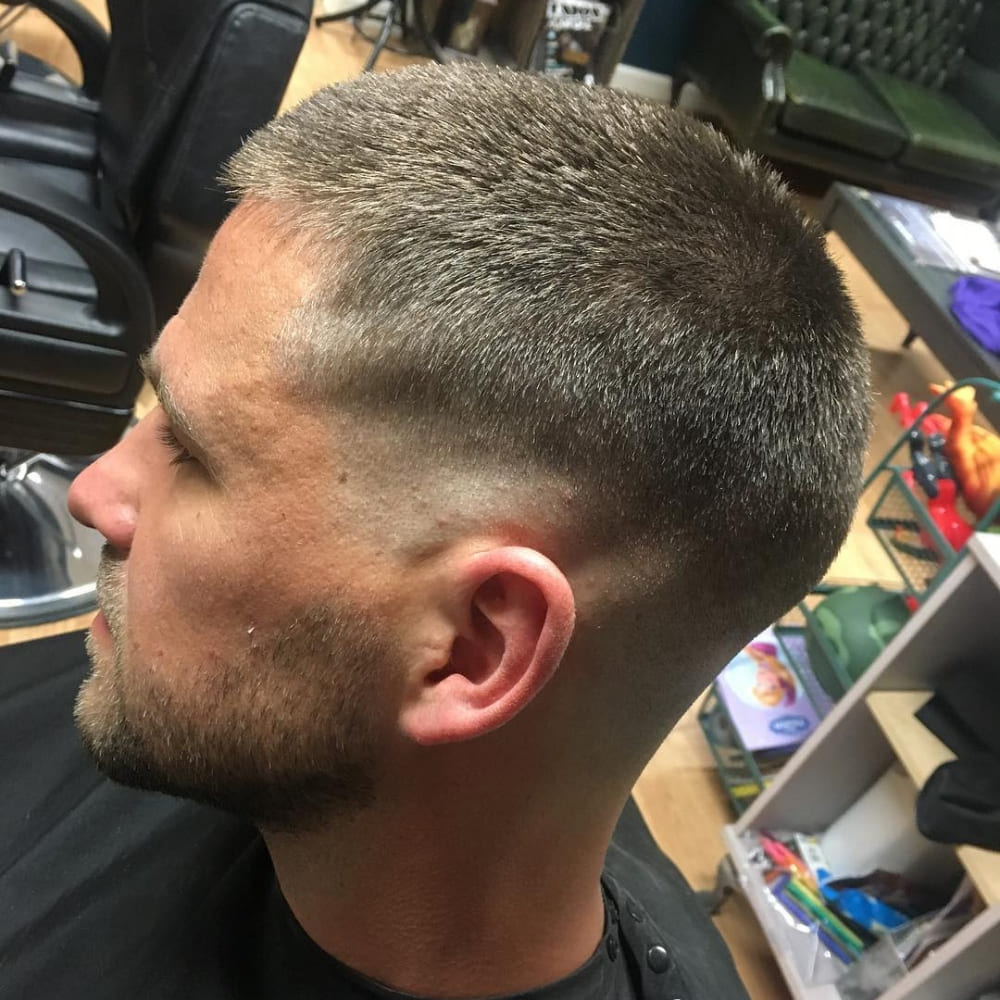
The crew cut is a timeless and versatile hairstyle, characterized by its short, tapered sides and a slightly longer top. This classic cut offers a clean, polished look that can be styled or left natural, making it a popular choice for men who appreciate both ease of maintenance and a touch of versatility.
Unlike the high and tight with its more extreme fade, the crew cut features a softer, more balanced transition between the shorter sides and the longer top. This balanced approach makes it suitable for a variety of settings, from professional environments to casual occasions. While still low-maintenance, the crew cut offers some styling flexibility.
The slightly longer top allows for the addition of texture using a matte hair clay like American Crew Matte Clay, giving the wearer some control over their look.
In the high and tight vs crew cut comparison, the crew cut distinguishes itself as the more adaptable option, working well with a wide range of hair types and face shapes. It’s a go-to choice for men seeking a polished yet effortlessly manageable style.
High and Tight vs Crew Cut: Key Differences
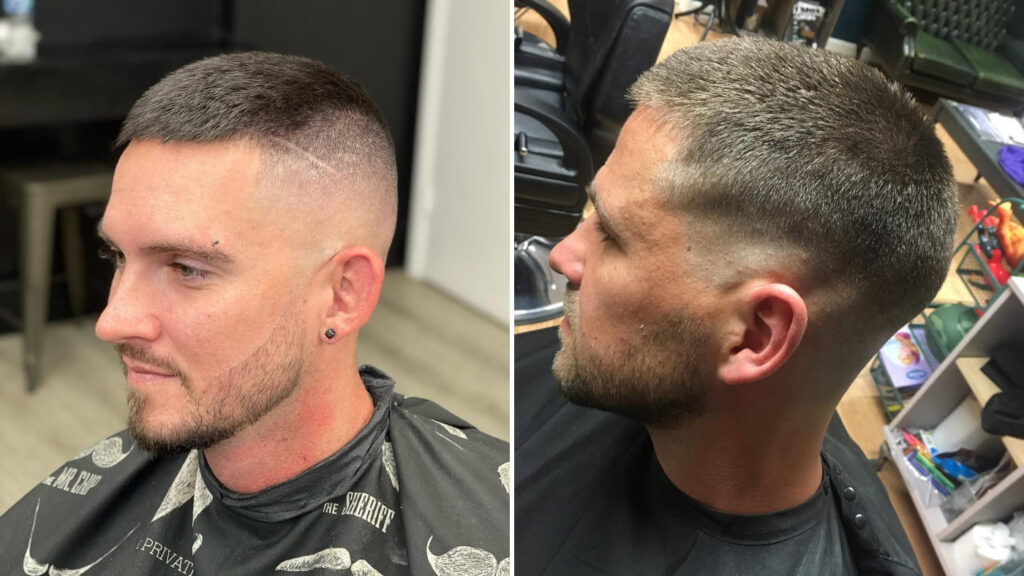
Both the high and tight and the crew cut offer a clean, masculine look, but they differ significantly in fade, top length, styling flexibility, and overall versatility. Here’s a detailed comparison to help you choose:
Fade and Side Length:
- High and Tight: The defining characteristic is the dramatic fade. This can range from a “skin fade” (shaved to the skin) to a “high bald fade” (blending to the skin near the top of the sides). The fade starts very high, creating a sharp contrast with the slightly longer top and a bold, military-inspired look. This high, tight fade emphasizes the angularity of the head shape.
- Crew Cut: The crew cut features a more gradual taper. The fade can be low, medium, or high, depending on preference. A low fade offers a subtle transition, while a higher fade is slightly more defined. The key is a seamless, balanced blend, less dramatic than the high and tight. This softer fade offers a more versatile look.
Top Length and Styling Flexibility:
- High and Tight: The top is kept very short (½ to 1 inch), offering minimal styling. For a slightly more textured look, the top can be left slightly longer, around ¾ inch. However, the focus is on the clean, sharp lines, not elaborate styling.
- Crew Cut: The top is longer (1 to 2 inches), allowing for some light styling. A small amount of matte clay or light pomade can add texture and definition. For a classic crew cut, 1 ½ inches is a good starting point. Styling is optional; the crew cut looks equally sharp worn naturally.
Face Shape and Hair Type Suitability:
- High and Tight: Best for square, oval, or diamond-shaped faces, as it accentuates strong jawlines and cheekbones. Ideal for thick, coarse, or straight hair, showcasing density and texture. May not be the best choice for fine or thinning hair, as it can expose the scalp.
- Crew Cut: More universally flattering, working well with round, oval, and square faces. The slightly longer top can elongate rounder faces, while tapered sides add definition to square or oval faces. Versatile for various hair textures; it can add volume to fine hair and provide a neat, manageable style for thicker hair.
Professionalism and Everyday Versatility:
- High and Tight: Often associated with military personnel, law enforcement, and athletes. While sharp, it may not be ideal for corporate or formal settings due to its more aggressive appearance.
- Crew Cut: A classic, professional haircut suitable for business and casual environments. Its versatility makes it appropriate for offices, formal events, and everyday wear.
Maintenance and Upkeep:
- High and Tight: Requires frequent trims (every 1-2 weeks) to maintain the sharp fade. The short top requires virtually no styling.
- Crew Cut: Requires less frequent barber visits (every 3-4 weeks). The longer top may need occasional light styling.
Ultimately, the choice between the high and tight vs crew cut comes down to personal preference. Consider your lifestyle, hair type, and desired level of styling to find the perfect fit. Both cuts offer a timeless, masculine appeal, ensuring you’ll look sharp and confident.
Talking to Your Barber: Getting the Perfect High and Tight or Crew Cut
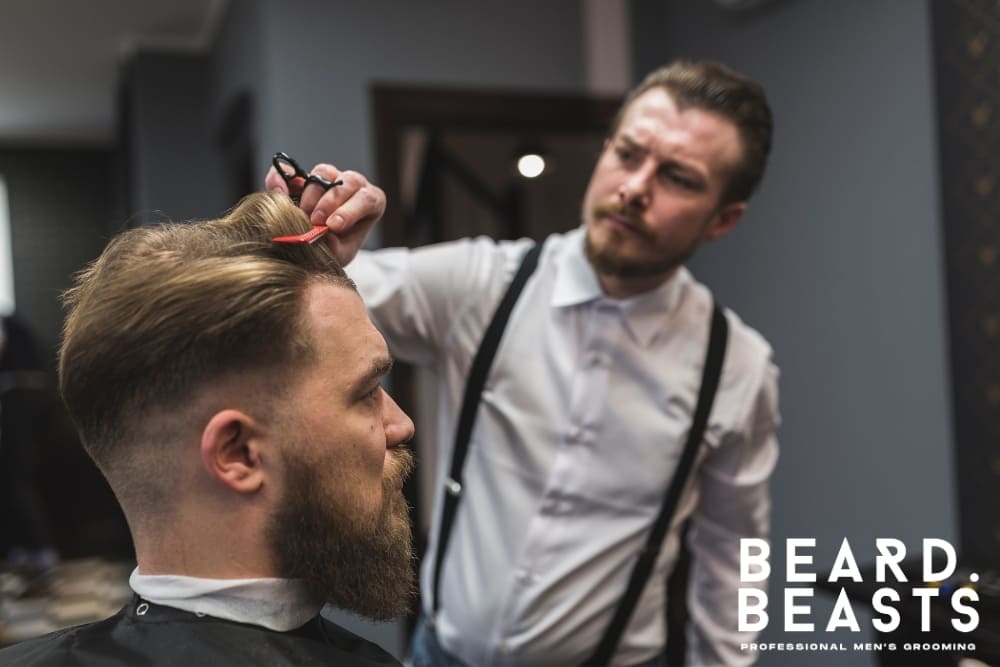
Communicating effectively with your barber is key to getting the exact high and tight or crew cut you envision. Here’s a guide to help you clearly express your preferences:
High and Tight:
- Be specific about the fade: Instead of just saying “high and tight,” describe the type of fade you want. “I’d like a high skin fade, please” means you want the sides and back shaved down to the skin, blending into the top. “A high bald fade” indicates a similar style but with the skin showing higher up the sides. If you prefer a less extreme fade, you can say “high taper” or “high fade,” specifying how high you want it to start.
- Top length: Specify the length you want on top. “About ½ inch on top” is a good starting point. If you want it slightly longer, say “around ¾ inch.” Use your fingers to indicate the desired length if that’s more comfortable.
- Show pictures: Bringing reference photos is always helpful. Find images of high and tight variations you like and show them to your barber.
- Use clear terminology: “High and tight,” “skin fade,” “bald fade,” and “high taper” are all common terms barbers understand.
Crew Cut:
- Describe the fade: Similar to the high and tight, specify the type of fade you want. “I’d like a low fade,” “medium fade,” or “high fade” will give your barber a good starting point. Again, you can use “taper” instead of “fade” if you prefer.
- Top length: Indicate the desired length on top. “About 1 ½ inches on top” is a common length for a classic crew cut. You can adjust this based on your preference.
- Show pictures: Reference photos are just as helpful for crew cuts. Find images that showcase the style you like.
- Styling preferences: If you plan to style your crew cut, mention it to your barber. This will help them cut the hair in a way that makes styling easier. For example, “I sometimes use a matte clay for texture, so I’d like the top to be cut with that in mind.”
- Use clear terminology: “Crew cut,” “low fade,” “medium fade,” “high fade,” and “taper” are all helpful terms.
General Tips for Both Cuts:
- Consult your barber: Don’t hesitate to ask your barber for their professional opinion. They can offer valuable advice on what styles will best suit your face shape and hair type.
- Be patient: Getting the perfect haircut sometimes takes a few visits. If you’re not completely satisfied with the first cut, communicate with your barber and make adjustments for the next visit.
- Regular trims: Both the high and tight and the crew cut require regular trims to maintain their shape. Discuss a trimming schedule with your barber to keep your cut looking sharp.
By following these tips, you can effectively communicate with your barber and get the perfect high and tight or crew cut that complements your individual style.
Conclusion: Choosing Between the High and Tight vs Crew Cut
Ultimately, the decision between the high and tight vs crew cut is a personal one. It’s about finding the hairstyle that best reflects your individual style, grooming habits, and professional needs. Do you prioritize a truly wash-and-go routine with a bold, defined look?
The high and tight’s sharp lines and minimal upkeep make it a compelling choice. Or do you prefer a bit more versatility, a style that transitions seamlessly from the office to a night out? The crew cut’s adaptable nature and subtle styling options might be the perfect fit.
No matter which cut you choose, remember that confidence is key. Both the high and tight and the crew cut are timeless, masculine styles that project an air of self-assurance. The right choice is the one that makes you feel your best, the one that empowers you to own your look. So, consider your options, choose wisely, and wear your new style with pride.

